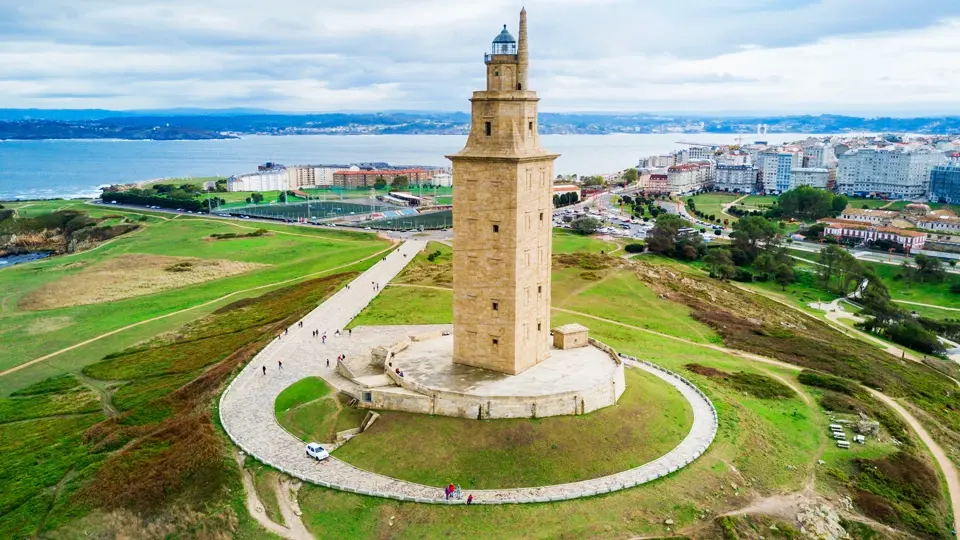5 off-the-beaten-track buildings in Spain
Last Updated on September 3, 2025
Spain has a great cultural and historic legacy printed in many cities and buildings like the Alhambra in Granada, the Sagrada Familia in Barcelona receive over 3 million tourist every year. Today we want to share with you 5 unique buildings off-the-touristic-beaten-track that will surprise you!!
1. ROMAN LIGHTHOUSE IN LA CORUÑA: THE HERCULES TOWER
The only Roman lighthouse that it is still in use in the World. The Tower of Hercules has served as a lighthouse and landmark at the entrance of La Coruña harbour in north-western Spain since the late 1st century A.D. when the Romans built the Farum Brigantium. Included in UNESCO world Heritage site list.

2. PRE-ROMANESQUE CHURCHES IN ASTURIAS
During the 9th century, the flame of Christianity was kept alive in the Iberian Peninsula in the small Kingdom of the Asturias where an innovative Pre-Romanesque architectural style was created that was to play a significant role in the development of religious architecture of the peninsula. The Churches of Santa Maria del Naranco (built between 842-850 under Ramiro I) and San Miguel de Lillo (also built under Ramiro I) located in the capital city of Oviedo, are the most representative examples.


3. A MEDIEVAL PALACE IN OLITE
Olite a small town of Navarra holds a fairy-tale like Castle that was once the one of the most envied medieval castles in Europe. Carlos III “the Brave” built this palace in the 12th century. Part of the palace is a Parador Hotel so you can rest like a medieval noble within the walls of a real medieval whim.

4. ALMADÉN BULLRING
The bullring in Almaden (Ciudad Real) was declared along with the rest of the mining heritage of the town, a World Heritage Site by UNESCO. Its hexagonal shape is unique in the world and is one of the oldest bullrings of Spain. It houses besides bullfights, a showroom the local tourism office, a restaurant and four-star hotel.

5. LONJA DE LA SEDA IN VALENCIA
Built between 1482 and 1533, this group of buildings was originally used for trading in silk (hence its name, the Silk Exchange) and it has always been a centre for commerce. It is a masterpiece of late Gothic architecture. The grandiose Sala de Contratación (Contract or Trading Hall), in particular, illustrates the power and wealth of a major Mediterranean mercantile city in the 15th and 16th centuries.






